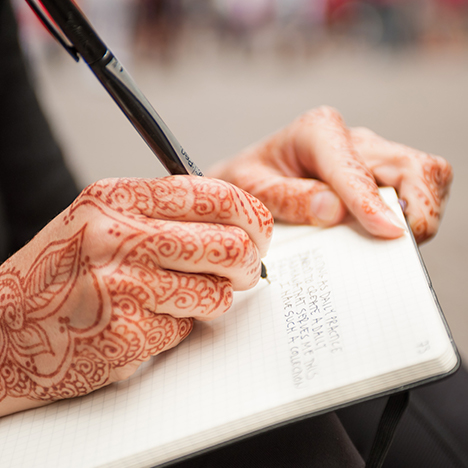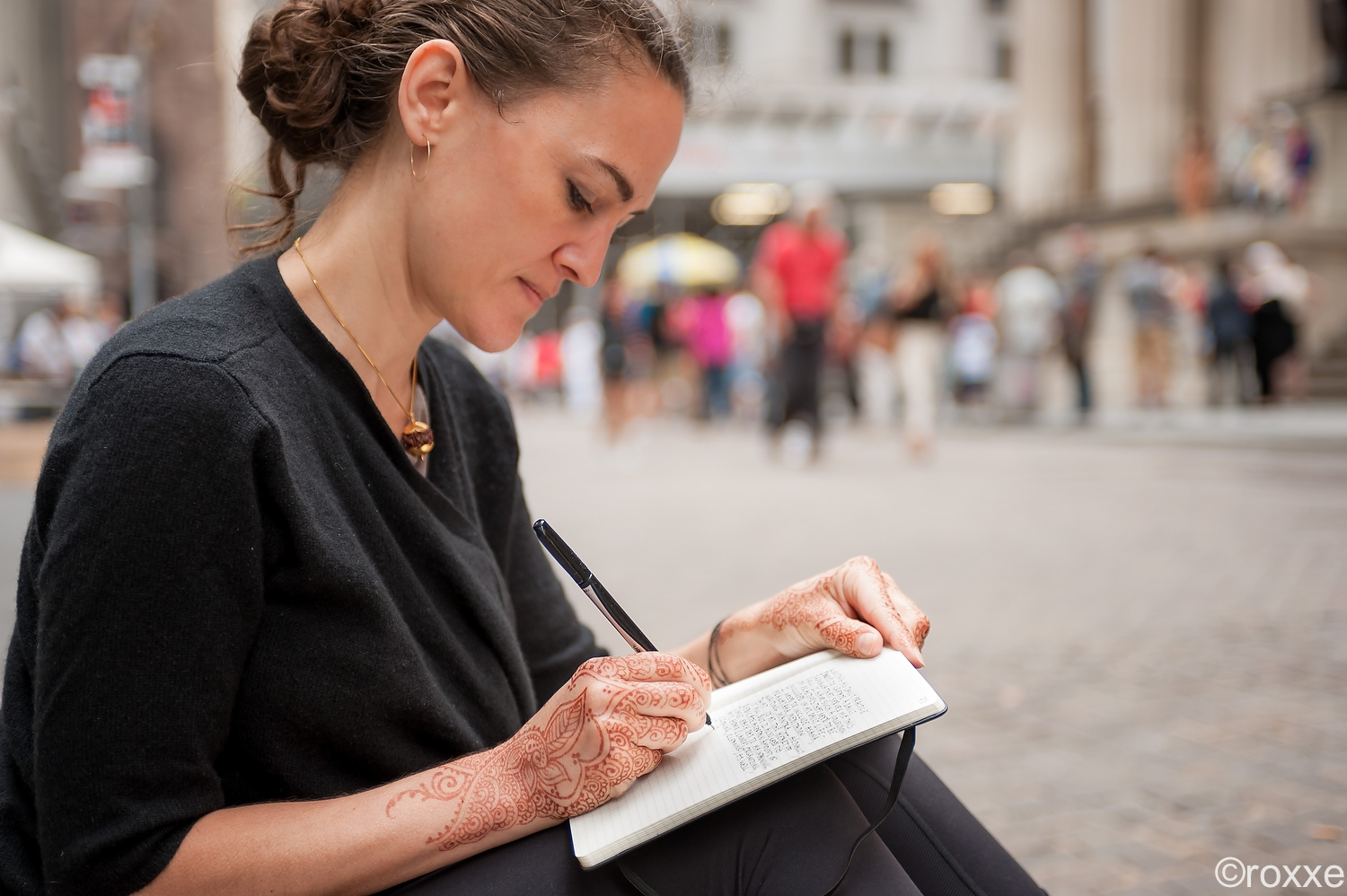
This blog post is written by author and mind-body instructor Susanna Harwood Rubin, who is leading a yoga writing workshop at the Museum on February 28.
I remember one year of my life that was particularly challenging. I wrote every day, much of it banal, self-absorbed, and composed of sloppy prose that was intended for no one’s eyes—not really even my own, because the act of writing was a purging. Whatever traces of my activity that remained on the page when I was finished were already irrelevant to me. I drew something out of my mind by giving it a form outside of myself. The act of inscribing was what was significant, not the evidence of the act. The physicality of the process was key. At the end of the year I shredded almost all of it.
But sometimes I commit to daily writing for delight, for the curiosity of seeing what emerges from my mind via my fingertips on a keyboard or my hand sliding a pen or pencil across a page. This writing is an adventure into myself, the same as creating a drawing, closing my eyes for meditation, or moving on my yoga mat. I know where I am and which road I am taking, but I don’t know where I’ll end up: just enough structure and just enough serendipity.

The results of these writing commitments are rich, much like my daily asana and meditation practices. This is not to say that I don’t write a lot of bad prose: self-indulgent, meandering, and destined for deletion. I do. And similarly, I have days in which my meditation is elusive, cluttered, and unsatisfying, or my body only grudgingly complies with a particular yoga asana. But the commitment shows me again and again that a regular practice cannot help but produce something. The writing may be 90 percent drivel, but that juicy and substantial 10 percent would not have happened without the rest.
The practice of yoga asana, the practice of meditation, the practice of writing: In each of these, commitment and repetition coalesce into ritual, and ritual both holds and creates meaning. In our lives. About ourselves. In the world.
Writing can be a purging, a meditation, a creative investigation in the same way that our asana practice can burn off what isn’t serving us, draw us into contemplation, or ignite our creativity. The process can feel hesitant or fluid, peaceful or driven, playful or gut wrenching.
There are as many different types of writing experiences as there are ways in which to combine words. It’s a strange compulsion, but an essential one to those who feel compelled, and it can heal you, save you, giving words to the choked longing, dense blockage, or the unarticulated self. Like offering movement to the tight muscles in our bodies, giving words to the dense tangle of stuff that sits inside of us can release what is held, offering us the experience of freedom.
There is a yoga to this. An act of connection. A reordering and realigning. Like meditation and yoga asana, writing has the capacity to create and shape the space of our bodies and minds. Writing can heal us. And writing can offer us ourselves.
Join Susanna Harwood Rubin for Move Your Body—Write Your Heart at the Rubin Museum on February 28.
About the Speaker
Susanna Harwood Rubin is the author of the book Yoga 365. Based in New York City, she teaches yoga, meditation, and tantric philosophy internationally and writes for numerous publications. Susanna created Writing Your Practice workshops and online courses that apply yoga philosophy, myth, and self-expression to the practice of writing. Before her yoga life, Susanna spent years designing and implementing the Art and Writing programs at MoMA and co-authored the book Looking at Matisse and Picasso.

